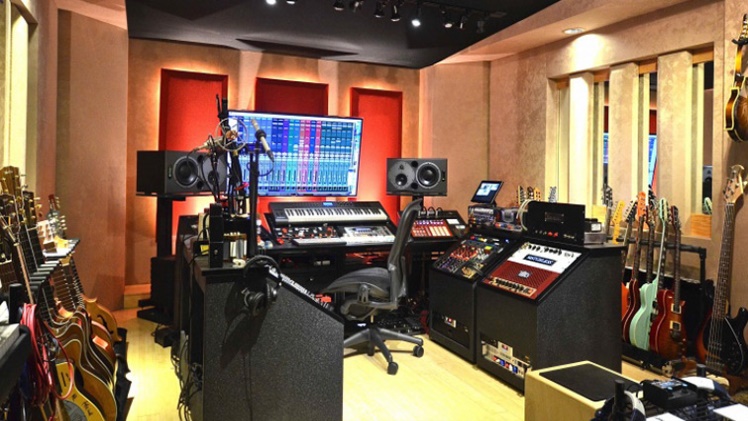Music studios and performance venues are environments where sound quality and clarity are critical. So whether you’re a musician, sound engineer, or venue owner, ensuring sound is adequately controlled and optimised can create an enjoyable and memorable experience. As such, acoustic solutions like carpets, diffusers and acoustic wall panels are a crucial element in achieving this goal, and there are various ways to implement them. The following points will explore the best acoustic solutions for music studios and performance venues.
Room Acoustics
Room acoustics refers to the way sound behaves within a space. Room size, shape, and construction materials can significantly affect sound quality. One common problem in music studios and performance venues is excessive reverberation or echo, which can cause sound to bounce around the space and create unwanted reflections. This can lead to poor sound quality and make it difficult for musicians and performers to hear themselves and others clearly.
To address this issue, acoustic treatment can be installed in the form of panels, diffusers, and bass traps. Acoustic panels are designed to absorb sound waves and reduce unwanted reflections. They can be made from various materials, including foam, fibreglass, and Rockwool. On the other hand, Diffusers scatter sound waves in multiple directions to create a more even sound distribution. Bass traps are designed to absorb low-frequency sound waves, which can be particularly problematic in larger spaces. Acoustic wall panels are an effective solution for controlling sound reflections and reverberation in performance venues. These panels are made of specialised acoustic materials that absorb sound and reduce noise pollution. Acoustic wall panels can be customised to fit the space’s aesthetic and can be installed in various shapes and sizes to achieve the desired acoustic performance.
Speaker Placement
Speaker placement is another critical factor in optimising sound quality in music studios and performance venues. Speakers’ position can significantly affect how listeners perceive sound and how it behaves within a space. Speakers should be placed to minimise the sound reflecting off walls and other surfaces, as this can lead to unwanted echo and distortion.
One effective approach to speaker placement is using acoustic modelling software, which can simulate sound behaviour within a space and help identify the best speaker placement for optimal sound quality. Alternatively, trial and error can determine the best position for speakers by moving them around the space and listening for the best sound musicalnepal musicalnepal quality.
Acoustic Treatment for Floors and Ceilings
Floors and ceilings are often overlooked for acoustic treatment but can significantly affect sound quality. Hard floors can create unwanted reflections and echo, while low ceilings can lead to a feeling of confinement and muffled sound. Installing acoustic treatment on floors and ceilings can mitigate these issues and create a more enjoyable listening experience.
Acoustic carpet tiles are an excellent solution for reducing noise pollution in areas with hard surfaces, such as tiles or hardwood floors. These carpet tiles absorb sound and reduce noise pollution, making them ideal for music studios and performance venues. Acoustic ceiling tiles are also available and can improve sound quality by absorbing sound waves and reducing reflections.
Acoustic solutions are critical in achieving optimal sound quality in music studios and performance venues. Whether you’re a musician, sound engineer, or venue owner, implementing the right acoustic solutions can create an enjoyable and memorable experience. Various ways exist to optimise sound quality and create a more enjoyable listening experience, from room acoustics to speaker placement to acoustic treatment for floors and ceilings. By understanding your space’s unique challenges and requirements, you can identify the best acoustic solutions to achieve your goals and create the ideal listening environment.

